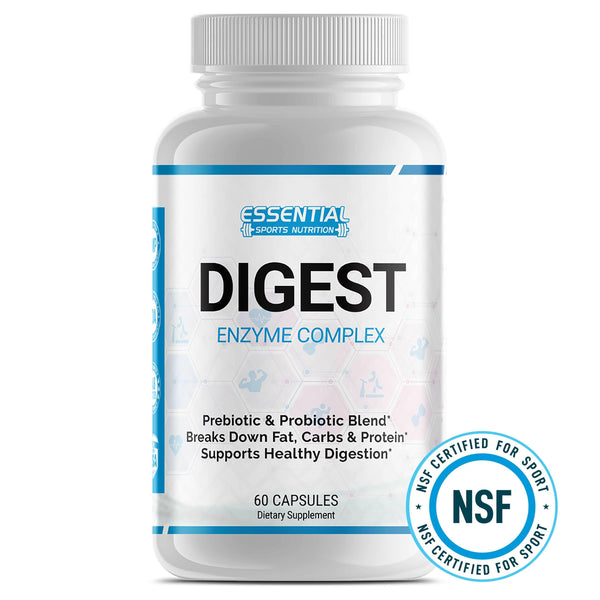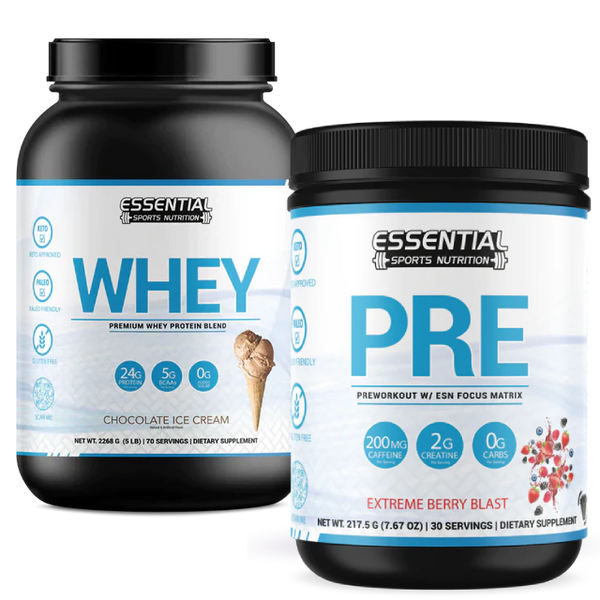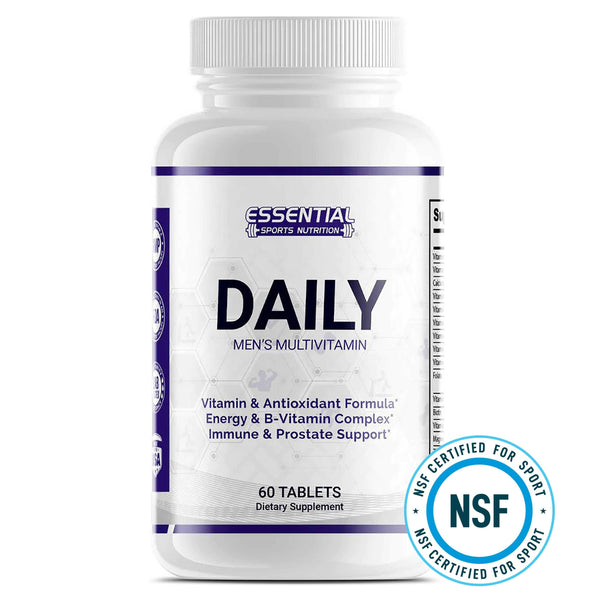Shelf-Stable vs Refrigerated Probiotics: Which is the Best Choice for You?
You're weighing refrigerated versus shelf-stable probiotics, which are essential for your gut's health. Refrigerated types need consistent cooling to guarantee their potency, thriving best at 4° to 8°C with low humidity. Thanks to technologies like Activ-Vial™, Shelf-stable versions don't require refrigeration and can be kept below 25°C, making them convenient. Both types demand proper storage—temperature and humidity are essential in maintaining their health benefits. Strain resilience varies, with some better at surviving environmental stresses, ensuring they work effectively once ingested. Choosing the right one could greatly impact your gut health and overall wellness. Discovering more could significantly enhance your understanding and decision-making.

Key Takeaways
-
Refrigerated probiotics require consistent cooling to maintain potency and viability.
-
Shelf-stable probiotics use technologies like Activ-Vial™, allowing storage at room temperatures up to 25°C without refrigeration.
-
Proper storage conditions, including temperature and humidity, are crucial for preserving the effectiveness of both refrigerated and shelf-stable probiotics.
-
Different probiotic strains have varying sensitivities to temperature and environmental conditions, impacting their suitability for refrigerated or shelf-stable formulations.
-
While refrigerated probiotics often emphasize their freshness, shelf-stable variants offer convenience and flexibility in storage and transport.
Understanding Probiotic Production

To understand probiotic production, it is crucial to acknowledge that it commences with fermenting specific strains, then integrates them into a culture medium, followed by centrifugation to guarantee the microbes' viability. This process is intricate and demands precise control to ensure that the beneficial properties of the probiotics are sustained throughout production. The complexity increases markedly when scaling up from lab-sized batches to large-scale manufacturing. You must adjust the conditions to replicate smaller settings, which isn't always straightforward.
Quality control becomes even more critical at this stage. Consistent testing ensures that each batch of probiotics meets stringent standards for microbial viability. This is where freeze-drying comes into play. By carefully freeze-drying the probiotics, manufacturers can preserve the microbes' life and ensure they remain effective until they reach your gut. This process involves lowering the temperature of the probiotics and then removing moisture through a vacuum process, locking in their potency.
Processing Probiotics: Survival Techniques

In the intricate process of probiotic production, stabilizers such as lyoprotectants and cryoprotectants play an essential role in safeguarding cell membranes before processing, safeguarding the survival of beneficial microbes. These protective agents are critical because they shield the bacteria from potential damage during freeze-drying, which is a pivotal step in probiotic manufacturing. Freeze-drying, also known as lyophilization, removes moisture from the probiotic cells, thereby preserving them in a viable state for longer periods.
During processing, monitoring and controlling the conditions meticulously to limit cell damage is important. This involves maintaining the right temperature, pressure, and timing during freeze-drying to ensure that a significant number of probiotic microbes survive the process. The survival techniques are fine-tuned in large-scale manufacturing settings, which differ significantly from laboratory environments. Scaling up requires rigorous testing and quality control to adapt the process effectively.
The processing of probiotics involves three main steps: fermenting the strain, incorporating it into a culture medium, and centrifuging the mixture to concentrate and obtain stable cells. Despite the processing challenges, these steps are designed to produce effective supplements by safeguarding probiotics' survival and viability.
Refrigerated Vs. Shelf-Stable Probiotics: Key Differences
Understanding the importance of processing techniques for probiotic viability leads us naturally to examine the significant differences between refrigerated and shelf-stable probiotics. When it comes to refrigerated probiotics, they're all about ensuring potency through a consistently cool environment, specifically between 4° to 8°C, and maintaining low humidity. This method is especially preferred in hot climates with a higher risk of degradation, highlighting its emphasis on stability and efficacy.
On the flip side, shelf-stable probiotics offer a different set of advantages. Thanks to Activ-Vial™ technology, these probiotics don't need to be kept in the fridge, making them the go-to option for those who value convenience and portability. You can stash them in your bag or keep them on your desk without worrying about them losing their potency, as long as they're stored below 25°C.
The choice between refrigerated and shelf-stable probiotics depends on the conditions they require for storage and the lifestyle they cater to. While refrigerated options offer a certain level of stability and efficacy, shelf-stable probiotics provide an unmatched level of convenience and portability.
Probiotic Viability in Supplements

When choosing one, understanding the factors that influence a probiotic supplement's viability is crucial. Transportation and storage conditions, like exposure to heat or humidity, can greatly influence the effectiveness of both refrigerated and shelf-stable probiotics. Additionally, ensuring they're stored properly can help preserve their potency until they reach your gut, where they become active.
Understanding Probiotic Viability
Probiotic supplements' efficiency hinges on the viability of the microbes within them, which must survive until they reach your gut. The life cycle of these probiotic organisms starts dormant, awakening only upon arrival in the digestive system. This journey, however, is fraught with challenges. Transportation and storage conditions are pivotal in maintaining or degrading probiotic viability. Whether these supplements need refrigeration or are shelf-stable, proper storage is crucial to preserve the life and beneficial bacteria within. To hedge against potential losses in viability during processing and storage, manufacturers often add extra probiotic organisms. This strategic overage guarantees that you still receive the intended probiotic effectiveness despite any natural decline in microbial counts over time.
Factors Affecting Viability
Given the importance of maintaining the viability of probiotics through transportation and storage, it's essential to explore the factors that influence their survival in supplements. Here's what you need to know:
-
Strain Sensitivity: Different probiotic strains have varying levels of sensitivity to environmental conditions, impacting their survival rate.
-
Processing Techniques: Lyoprotectants, cryoprotectants, and freeze-drying methods are vital for protecting probiotic cell membranes during processing and guaranteeing their viability.
-
Formulation: Shelf-stable probiotics are specially formulated to remain stable at room temperature, negating the need for refrigeration unlike some refrigerated probiotics.
-
Environmental Conditions: Proper monitoring and control of environmental factors during processing limit cell damage, which is key in maintaining probiotic viability.
Understanding these factors helps ensure you get the most effective probiotic supplements.
Storing Your Probiotics for Maximum Potency
Ensuring your probiotics are stored at the appropriate temperature is vital for maximizing their potency and maintaining their viability. Refrigerated probiotics thrive in cold temperatures, which safeguard their effectiveness over time. This specific storage requirement stems from their formulation, which is designed to remain potent in cooler environments. On the other hand, shelf-stable probiotics offer a level of convenience engineered to retain their efficacy without the need for refrigeration. Temperature control plays a pivotal role in the survival and functionality of these beneficial bacteria; improper storage can greatly impair their health benefits. To make sure you're getting the full impact of your supplement, adhering to the recommended storage conditions is essential. Whether your choice is refrigerated or shelf-stable, understanding and applying proper storage practices are critical for preserving the viability and potency of your probiotic supplements.
Efficacy of Different Probiotic Strains

Many probiotic strains have unique survival capabilities, influencing their effectiveness once ingested and highlighting the necessity of selecting ones that align with your specific health requirements. Considering the diversity in probiotic strains, it's essential to understand how their heat sensitivity, storage conditions, and overall efficacy can impact their journey to your gut intact. Here's what you need to know:
-
Varying Survival Abilities: Not all probiotic strains are created equal. Some can withstand harsh processing and storage conditions better than others. This resilience guarantees they remain effective from production to consumption.
-
Heat Sensitivity: Certain strains are more vulnerable to heat, which can diminish their viability. When selecting a probiotic, it's vital to consider the storage requirements to maintain their potency.
-
Efficacy and Gut Health: The ultimate goal of consuming probiotics is to support gut health. Strains that can reach the gut intact without being destroyed by stomach acid or bile have a better chance of conferring health benefits.
-
Tailored to Individual Needs: Research underscores the importance of selecting probiotic strains tailored to your health needs. Understanding the specific characteristics of different strains can guide you to the most effective option.
The Expiry of Probiotic Supplements

While the shelf life of probiotic supplements is typically 1-2 years, it's important you're aware that the expiration date marks the period during which their potency is guaranteed. Using probiotics before this date ensures you get the maximum effectiveness and health benefits from these beneficial bacteria.
Shelf-stable probiotics, in particular, require proper storage to maintain their potency until the expiration date. Adhering to these guidelines is essential to ensure that you're truly benefiting from your supplements. Regularly checking expiration dates on your probiotic supplements is important for maintaining peak health benefits.
| Factor | Importance |
|---|---|
| Expiration Date | Guarantees potency; using probiotics before this date ensures maximum health benefits. |
| Shelf Life | Typically 1-2 years for shelf-stable probiotics, indicating how long they remain effective. |
| Proper Storage | Essential for maintaining potency until the expiration date. |
| Potency | Directly tied to the expiration date; it ensures the effectiveness of the probiotics. |
| Health Benefits | Maximizing these requires adherence to the expiration date and proper storage. |
Refrigeration: Extending Probiotic Shelf Life?

Understanding the significance of the expiration date and proper storage for probiotics naturally leads us to explore the role of refrigeration in extending their shelf life. Knowing how to keep these beneficial bacteria alive and effective for as long as possible is important. Here are some key points to keep in mind:
-
Check the Label: Always look for storage instructions on the packaging. This is your first hint in determining whether your probiotics need to be refrigerated. Many manufacturers recommend keeping their products in the fridge to extend probiotic shelf life.
-
Heat Sensitivity: Be mindful that some probiotic strains are sensitive to heat. Refrigeration can help mitigate the risk of heat exposure, preserving the viability of these strains.
-
Moisture and pH Levels: Besides temperature, moisture, and pH levels are important in influencing the survival rate of probiotics. Refrigeration can help maintain a stable environment, reducing the risk of moisture buildup that could harm the probiotics.
-
Shelf-Stable Alternatives: There are shelf-stable options for those who either can't refrigerate or prefer not to. These products are formulated to withstand room temperature without significant loss of potency, though they still benefit from cool, dry storage conditions.
Selecting the Right Probiotic Supplement

When selecting the appropriate probiotic supplement, it is crucial to evaluate whether a refrigerated or shelf-stable option best suits your lifestyle and health needs. Checking the label for storage instructions is your initial step to guarantee you're choosing a product that aligns with your daily routine and maintains its effectiveness over time. Refrigerated probiotics are often considered more effective because they preserve potency and viability under controlled temperatures. This makes them a great choice if you're at home and can manage the specific storage requirements.
However, if you're frequently on the move or lack access to consistent refrigeration, shelf-stable probiotics offer a convenient alternative. Thanks to advancements like Activ-Vial™ technology, these supplements are designed to withstand various environmental conditions without losing their efficacy. This characteristic ensures that the beneficial bacteria remain active and ready to support your gut health, regardless of where you are.
Probiotic Usage: Precautions and Recommendations

Before you start taking probiotics, it's important to consult your healthcare provider, especially if you're immunocompromised or recently had surgery. Be mindful of potential side effects such as bloating and gas, which are common when introducing probiotics into your system. Always adhere to the product label's storage and expiry guidelines to ensure you're getting the most effective and potent probiotic benefits.
Consult Healthcare Providers
It's important to consult healthcare providers to ensure probiotics are safe and suitable for your specific health needs, especially since certain conditions may warrant caution. Here are reasons why professional guidance is essential:
-
Safety and Appropriateness: Health professionals can assess if probiotics are safe and appropriate for you, considering your health condition.
-
Personalized Recommendations: They provide recommendations tailored to your medical history and current health status.
-
Special Conditions: Individuals who are immunocompromised or recovering from surgery might need to avoid probiotics.
-
Monitoring Side Effects: Healthcare providers can help monitor side effects or interactions, ensuring you're not adversely affected by probiotic use.
Always seek medical advice before adding probiotics to your regimen for a health-conscious, informed approach.
Recognizing Side Effects
Understanding the potential side effects of probiotics is equally important as recognizing their benefits for your health regimen. While most people enjoy probiotics' advantages without issues, some might initially experience mild side effects such as bloating or gas. These usually subside as your body adjusts. Take extra precautions if you're immunocompromised or recently underwent surgery. Probiotics may not suit everyone, so it is important to consult a healthcare professional for personalized advice before starting. This step guarantees safety, especially if you have underlying health conditions. Remember, side effects and digestive issues can vary among individuals. Given probiotics' generally good safety profile, monitoring your body's reaction and adjusting usage if necessary is vital, ensuring a beneficial and comfortable experience.
Storage and Expiry Guidelines
When considering the incorporation of probiotics into your daily health routine, it's important to pay attention to their storage and expiry guidelines to maintain their effectiveness and safety. Here are four essential guidelines:
-
Refrigerated vs. Shelf-Stable: Refrigerated probiotics often ensure potency, as they are shielded from heat and humidity, which can degrade live cultures. Shelf-stable versions, while convenient, may lose potency over time.
-
Potency Over Time: High-quality, non-refrigerated probiotics use specific technology to maintain potency without refrigeration, ensuring their efficacy.
-
Check Manufacture Dates: Opt for products that ensure content at manufacture, providing a clearer indication of their potency.
-
Consider Prebiotics: Retailers suggest high-dose probiotics with prebiotics for the best benefits, emphasizing the importance of the probiotic dose and prebiotic content.
Conclusion

In wrapping up, selecting the right probiotic feels like maneuvering through a labyrinth in the dark. But armed with this knowledge, you're now a torchbearer. Remember, the essence lies in the probiotic's viability and strain efficacy, whether refrigerated or shelf-stable. Don't let the expiry date catch you off guard; it's the cliff edge for probiotic potency. With a discerning eye and this guide in your arsenal, you're all set to make an informed choice that could elevate your gut health to celestial heights.
Shelf-Stable or Refrigerated Probiotics FAQs
Q: What are shelf-stable probiotics?
A: Shelf-stable probiotics refer to probiotic supplements that don’t require refrigeration to stay alive and maintain their effectiveness. These probiotics are often freeze-dried to remove moisture content, allowing them to be stored at room temperature for longer periods.
Q: Why do some probiotics need to be refrigerated?
A: Some probiotics need to be refrigerated because they contain live microorganisms that are sensitive to high temperatures. Refrigeration helps these probiotics stay alive and maintain their potency until consumption.
Q: What’s the difference between shelf-stable and refrigerated probiotics?
A: The main difference between shelf-stable and refrigerated probiotics is their storage requirements. Shelf-stable probiotics can be stored at room temperature, while refrigerated probiotics must be kept in the fridge to preserve the live bacteria.
Q: Are all probiotics living microorganisms?
A: Yes, probiotics are living microorganisms, mostly bacteria strains, that provide health benefits when consumed adequately. These live bacteria are crucial in supporting gut health and overall well-being.
Q: How should you store your probiotics?
A: Depending on the probiotic type, you should follow the storage instructions provided on the packaging. Shelf-stable probiotics can be kept in a cool, dry place, while refrigerated probiotics must be stored in the fridge to maintain their potency.
Q: Can I take probiotics that are not refrigerated?
A: Yes, you can take non-refrigerated probiotics, also known as shelf-stable probiotics, as long as you follow the recommended storage guidelines. These probiotics are designed to remain stable at room temperature without the need for refrigeration.
Q: Are Refrigerated Probiotics Better Than Shelf-Stable Probiotics?
A: You're wondering if refrigerated probiotics outperform shelf-stable ones. Generally, they do because they maintain their potency longer, ensuring you get the full benefits. It's worth choosing refrigerated versions for their enhanced effectiveness and viability.
Q: Are Non-Refrigerated Probiotics Bad?
A: No, non-refrigerated probiotics aren't negative. In fact, with technologies like lyoprotectants, they preserve potency. High-quality versions guarantee effectiveness from the time of manufacture, and some last long without refrigeration, especially those with 1 billion CFUs or more.
Q: Why Buy Refrigerated Probiotics?
A: You'd buy refrigerated probiotics because they're more effective, maintain potency better, and ensure the live strains you consume are viable. They're a smart choice for gut health, especially in warm climates or for specific health needs.
Q: Should I Refrigerate Now Probiotics?
A: Check the label on your Now probiotics; if it specifies refrigeration, it's important for maintaining their effectiveness. Studies highlight that live cultures lose potency at room temperature, making proper storage essential for benefits.























